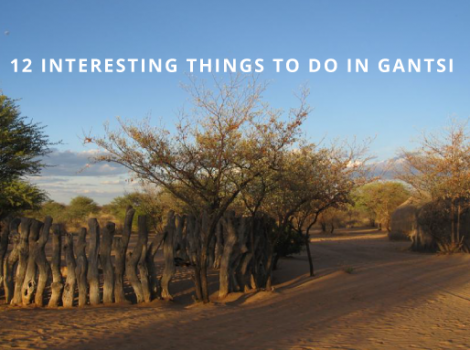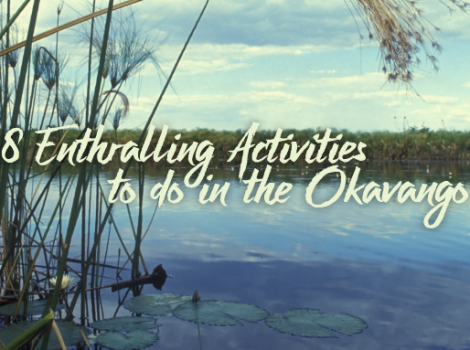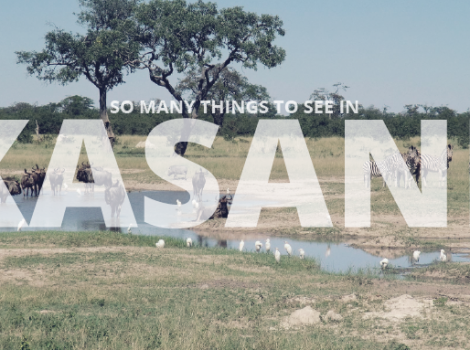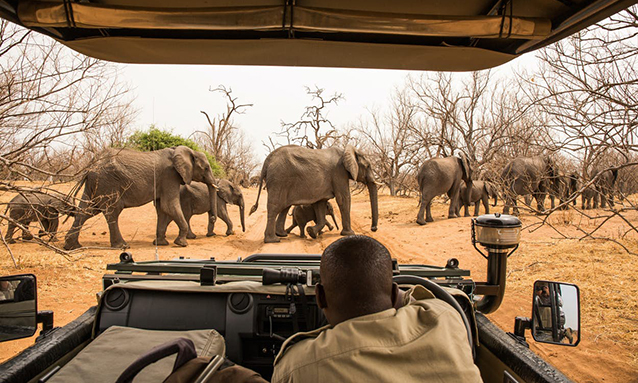
Botswana combines mind-blowing wildlife-watching, cinematic landscapes, extraordinary experiences and top-notch guides. Whether you’re a first-timer or an old safari hand who returns again and again, the country always has something thrilling to discover.
Vast expanses of this dazzlingly diverse country are protected spaces, allowing a staggering array of wildlife to roam freely. Home to some of Africa’s most stunning – and budget-busting – lodges and tented camps, Botswana leads the way in low-volume, high-value safari tourism. But if you join a mobile safari or self-drive and stay at a state-owned campsite, you won’t have to splash too much cash to get up close to wild nature.
Here’s a rundown of the best places to visit in this standout safari destination.
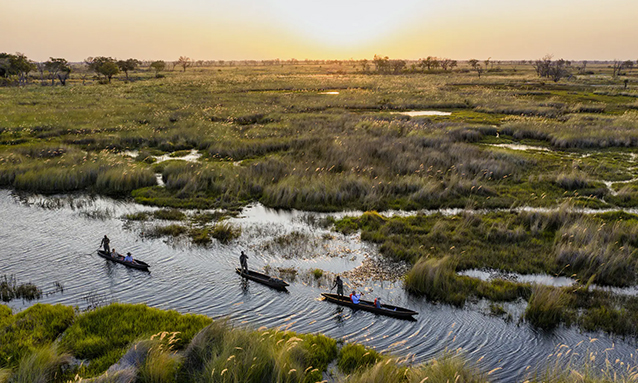
Okavango Delta: the best place for wildlife watching in a watery wilderness
Dubbed the “Jewel of the Kalahari,” the Okavango Delta – the world’s largest inland delta – is a highlight of any trip to Africa. Heavy rains in the Angolan highlands swell the Okavango River, eventually spilling into the desert and fanning out into a shimmering maze of channels, lagoons and islands that cover around 20,000 sq km (7700 sq miles) at its wettest. Lodges here follow Botswana’s exclusive, high-end model, but you’ll be virtually tripping over wildlife, including the Big Five (you might even catch lions swimming between islands), endangered African wild dogs and more than 500 species of birds.
You can explore by 4WD and on foot, but the best way to get up close to the delta is by mokoro, a traditional canoe that sits low on the shallow waterways. A Botswana gondolier will steer you through the rustling reeds to spy on dainty jacana birds hopping between lily pads, leaping red lechwe (the delta’s aquatic antelope) and elephants taking a dip.
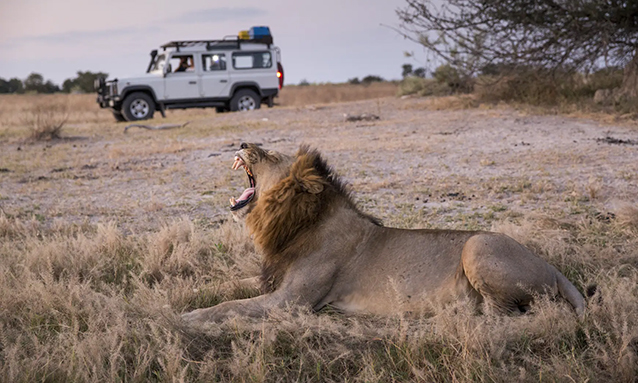
Moremi Game Reserve: the best place for abundant wildlife and a range of accommodations
Covering around 4000 sq km (1500 sq miles), the Moremi Game Reserve – the oldest protected area of the Okavango Delta – might be small (by Botswana’s standards at least), but what it lacks in size, it makes up for with the density and diversity of its wild inhabitants. It’s also the most accessible corner of the delta if you’re self-driving.
Watch feasting lions, leopards lolling in trees and wild dogs hunting in relay – it’s the stuff that safari dreams are made of – and that’s not forgetting the bounteous birdlife and staggeringly beautiful landscapes, from mopane woodland to ilala palms, dry savannah to seasonal floodplains, and permanent reed-fringed lagoons.
Chief’s Island is considered the crème de la crème of safari destinations, home to herds of red lechwe, zebra, wildebeest, buffalo and big cats galore, as well as troops of baboons and vervet monkeys, with rivers stuffed with colossal crocodiles and harrumphing hippos.
Moremi Game Reserve has no shortage of sensational luxury lodges to choose from, but it also has community-run campsites if you’d rather be woken by an elephant snuffling around your tent than a butler.
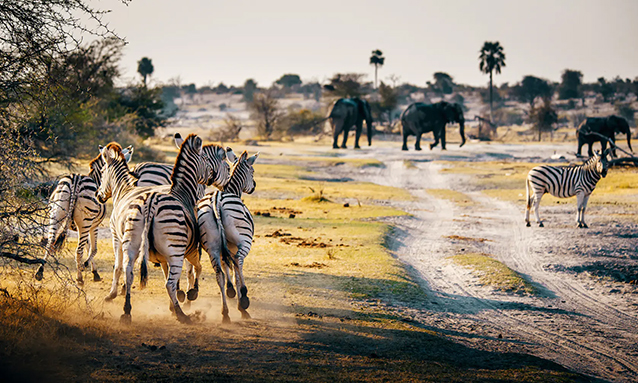
Makgadikgadi Pans National Park: the best place for stargazing
The crusty white expanse of the Makgadikgadi Pans is all that remains of a long-vanished lake. The world’s largest network of salt pans appears devoid of vegetation, save for isolated clusters of majestic baobab trees, but in the dry season (April to September) they possess a stark, surreal beauty.
You can horseback ride and quad bike over the lunar-like landscape, and with zero light pollution, a sleep-out on the pans to watch the celestial light show is a must. Wildlife may seem scarce, but the Boteti River to the west offers more traditional game viewing. During and after the rains, the pans attract dazzles of zebra and herds of wildebeest during the annual migration, swiftly followed by lion, cheetah, and hyena.
Sua Pan is home to huge numbers of flamingos, and it’s the best park in Africa to hang out with a habituated gang of meerkats.
Chapman’s Baobab – the arboreal beacon of the pans, thought to have been around 5000 years old with a circumference of 25m (82ft) – is no longer standing, but you can marvel at Baines’ Baobabs in neighbouring Nxai Pan National Park.
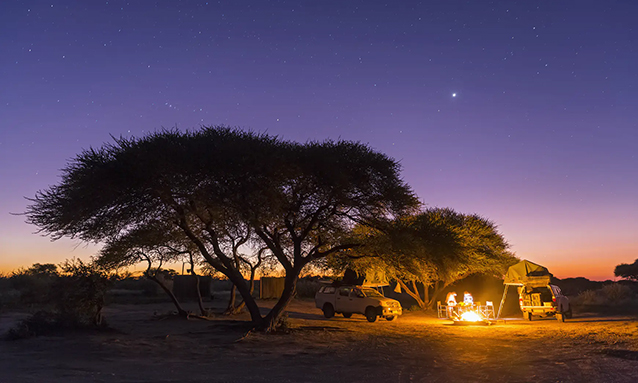
Central Kalahari Game Reserve: the best place for getting off the beaten track
Where the delta ends, the desert takes over. The Central Kalahari Game Reserve is Africa’s second-largest reserve (after Selous in Tanzania), and as its name suggests, it’s smack bang in the centre of the Kalahari Desert.
Don’t expect Sossusvlei-style dunes – the striking landscape is all glittering salt pans, fossilised river valleys and semi-arid grassland. It’s known for its desert-adapted species, including the legendary Kalahari black-maned lion, elephants and enormous herds of antelope. As one of the world’s most sparsely populated regions, you’re unlikely to bump into anyone else on a game drive.
It’s also the former ancestral home of the indigenous San people, hunter-gatherers with a profound connection to their land and its wildlife, who still practice their ancient traditions in neighbouring private reserves.
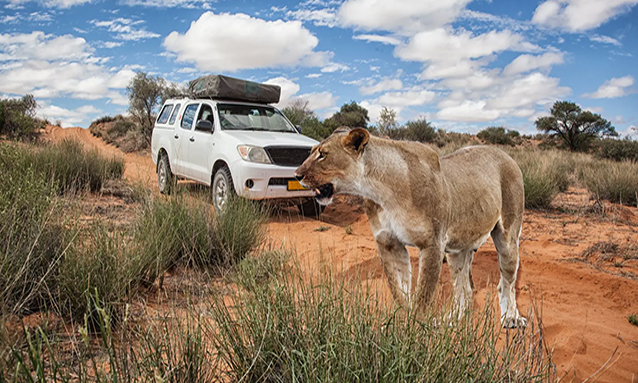
Kgalagadi Transfrontier Park: the best place for desert adventurers
Split between Botswana and South Africa, the remote Kgalagadi Transfrontier Park is a vast desert wilderness, a harsh but beautiful landscape where the dry riverbeds of the Nossob and Auob are flanked by rolling red dunes, picture-perfect at golden hour.
You won’t find water-dependent hippo, elephants, buffalo or zebra here, but you’ll be rewarded with sightings of desert-adapted antelopes, such as the stately gemsbok, and you have a good chance of big cat sightings, including lions, leopard and cheetah. Look out for smaller carnivores, too: perhaps a shy brown hyena, big-eared bat-eared foxes, or a wiry Cape fox. You can drive for hours without seeing a thing, which makes it all the more special when you do.
For intrepid travellers, the Botswana side has some rudimentary campsites where there’ll be nothing but a thin wall of canvas between you and the resident predators. The South African portion has more accommodation options.
Chobe National Park: the best place for budget-friendly safaris
Botswana’s first – and second largest – national park, Chobe is one of Africa’s most spectacular wildlife-watching areas with several distinct ecosystems. Arguably, it’s home to more elephants than anywhere else on the continent, as well as a host of easy-to-spot big cats, buffalo, giraffe and zebra, making it perfect for first-time safari-goers.
Chobe’s northeastern corner and its namesake river are easily accessed by road from Kasane, making it more wallet-friendly – and much busier – than some of Botswana’s more remote regions. A jumping-off point for Victoria Falls, Kasane has accommodations to suit all budgets, along with gas stations and grocery stores if you need to stock up.
It’s also the place to organise a 4WD safari along the river and its floodplains, or an unmissable sunset cruise, when gruff-looking buffalo, loping giraffes and enormous elephants flock to the river to drink.
To get off the beaten track, head southwest, where the long-dry Savuti Channel – the stomping ground of large lion prides – is water-filled again and attracting more and more wildlife.
Article By Sarah Gilbert
Source: https://www.lonelyplanet.com/articles/best-places-to-visit-in-botswana

